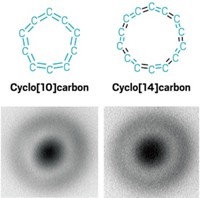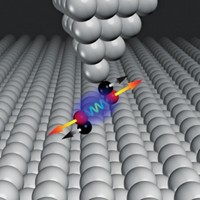Advertisement
Grab your lab coat. Let's get started
Welcome!
Welcome!
Create an account below to get 6 C&EN articles per month, receive newsletters and more - all free.
It seems this is your first time logging in online. Please enter the following information to continue.
As an ACS member you automatically get access to this site. All we need is few more details to create your reading experience.
Not you? Sign in with a different account.
Not you? Sign in with a different account.
ERROR 1
ERROR 1
ERROR 2
ERROR 2
ERROR 2
ERROR 2
ERROR 2
Password and Confirm password must match.
If you have an ACS member number, please enter it here so we can link this account to your membership. (optional)
ERROR 2
ACS values your privacy. By submitting your information, you are gaining access to C&EN and subscribing to our weekly newsletter. We use the information you provide to make your reading experience better, and we will never sell your data to third party members.
Physical Chemistry
Atomic Force Microscopy Provides Astonishing Images Of Chemical Bonds
Technique reveals hydrogen bonds between molecules and before-and-after pictures of a reaction
by Jyllian Kemsley
December 23, 2013
| A version of this story appeared in
Volume 91, Issue 51

COVER STORY
Microscopy: AFM Delivers Molecular Snapshots
High-resolution atomic force microscopy has produced several molecular pinup pictures in recent years. The first memorable image showed the atoms and bonds in a single molecule of pentacene. This year, AFM enabled scientists to go well beyond that to illuminate hydrogen bonds between molecules as well as before-and-after images of a molecule undergoing a chemical reaction. A team led by Xiaohui Qiu and Zhihai Cheng of China’s National Center for Nanoscience & Technology and Wei Ji of Renmin University of China succeeded in visualizing hydrogen bonds by depositing 8-hydroxyquinoline on a copper surface (C&EN, Sept. 30, page 5; Science 2013, DOI: 10.1126/science.1242603). At temperatures near absolute zero, the researchers found that 8-hydroxyquinoline molecules formed hydrogen-bonded aggregates, with the electron density of the hydrogen bonds picked up by AFM. In separate work, a group led by Felix R. Fischer and Michael F. Crommie of the University of California, Berkeley, used AFM to image an enediyne compound and its heat-induced cyclization products on a silver surface (C&EN, June 3, page 7; Science 2013, DOI:10.1126/science.1238187). Enediynes undergo a variety of competing cyclization processes, producing a multitude of products that are challenging to identify. Fischer, Crommie, and their colleagues found that the molecules in their system transformed into fused-ring polycyclic aromatic structures.






Join the conversation
Contact the reporter
Submit a Letter to the Editor for publication
Engage with us on Twitter